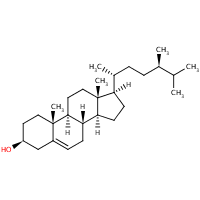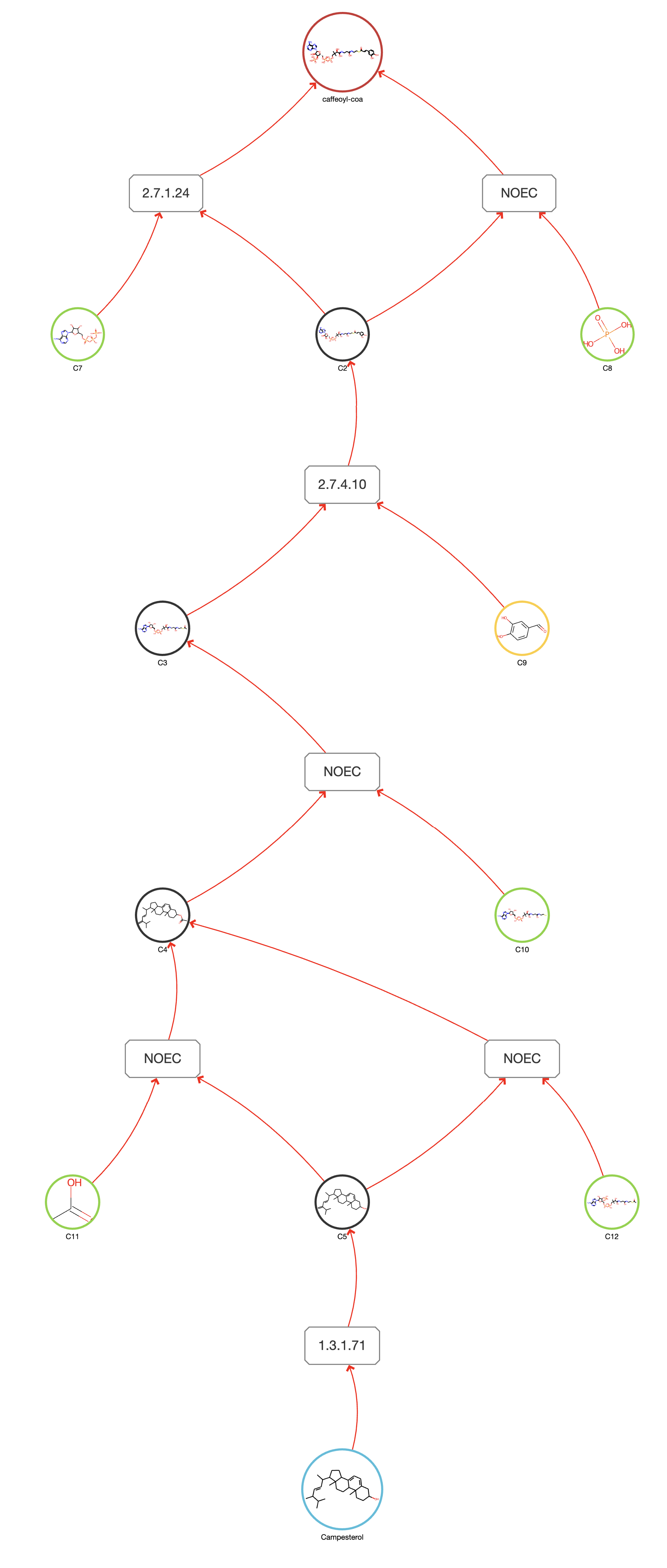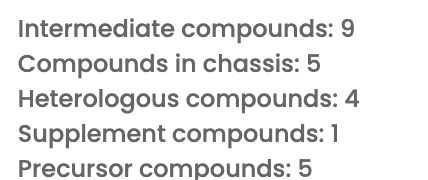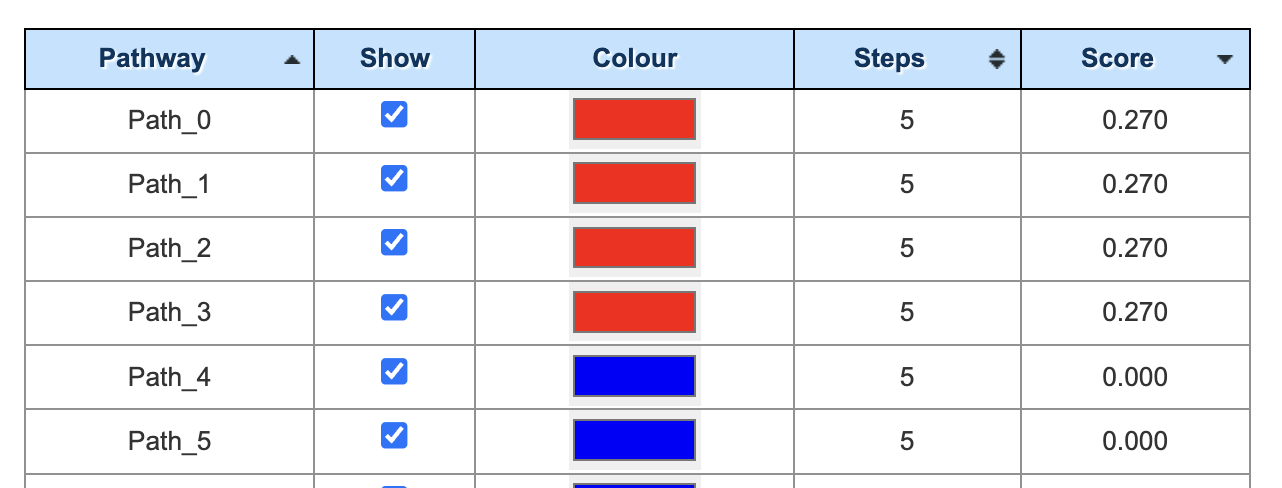DetSpace: Engineering detectable pathways for bio-based production
In the following, we provide a step-by-step tutorial of the DetSpace web server.
A walk-through tutorial
Start
In this tutorial, we assume that the user wants to produce campesterol, a phytosterol structural similar to cholesterol with lipid-lowering effects, in the Yarrowia lipolytica yeast chassis (for engineered production routes see for instance Xu et al, J Ind Microbiol Biotechnol, 2020.)


Chassis selection
Therefore, we start by selecting the Y. lipolytica chassis:

Target compound selection
Then, the target product campesterol is selected from the list of producible compounds:


The column Selected pathways indicates that there are in total 1388 detectable pathways available for campesterol, and none have been yet selected.
Detectable compound selection
From the list of detectable compounds that can be linked to the campesterol product, caffeoyl-CoA , an acyl-CoA thioester, is selected:


The column Selected pathways indicates that there are in total 433 detectable pathways available involving caffeoyl-CoA, and that 12 correspond to the ones linked the selected product, i.e., campesterol.
Pathway generation
Next, the detectable pathway that converts campesterol into caffeoyl-CoA is generated and graphically shown:

Scope information
The information about the scope of the detectable space between campesterol and caffeoyl-CoA is then shown on a table. In this case, there are in total 9 intermediate compounds, i.e., compounds that appear in at least one of the detectable pathways; 5 compounds in chassis, i.e., metabolites involved in the pathway that are endogenous to the cahssis; 4 heterologous compounds, i.e., compounds in pathways that are not naturally produced by the chassis; 1 supplement compounds, i.e., a compound that is needed for at least one detectable pathway that needs to be added as supplement to the growth medium; and 5 precursor compounds, i.e., compounds that are heterologous to the chassis but can be produced through engineered routes, whose details can be accessed by clicking on the compound.

Pathway information
If multiple pathways are available, they will appear at the table on the right panel, each one indicating the number of steps and its associated score according to the RetroRules reaction viability score. By hovering or clicking on a pathway, the selected pathway will be highlighted on the graph.

Detailed information about each compound in the pathway can be obtained by clicking on the node in the pathway, including chemical structure and link to databases. In the case of the producible compound, i.e., campesterol, it is possible to display the production pathway associated with the compounds. In the case of the detectable compound, i.e., caffeoyl-CoA, information about the transcription factor that can be allosterically regulated by this effector is provided through the SensBio database.
Similarly, for each enzyme in the pathway, information about the chemical transformation can be obtained by clicking on the node. In addition, a link to the Selenzyme service is provided to search for putative enzyme sequences catalyzing the desired reaction.
Exporting the results
The results can be exported into Cytoscape exchange JSON format and in Galaxy SynBioCAD rpSBML format, allowing in that way its further processing to obtain the plasmid sequences of the design of the associated genetic circuit.
Contact: pablo.carbonell@upv.es